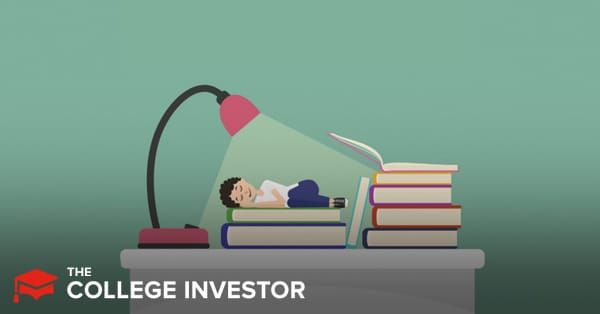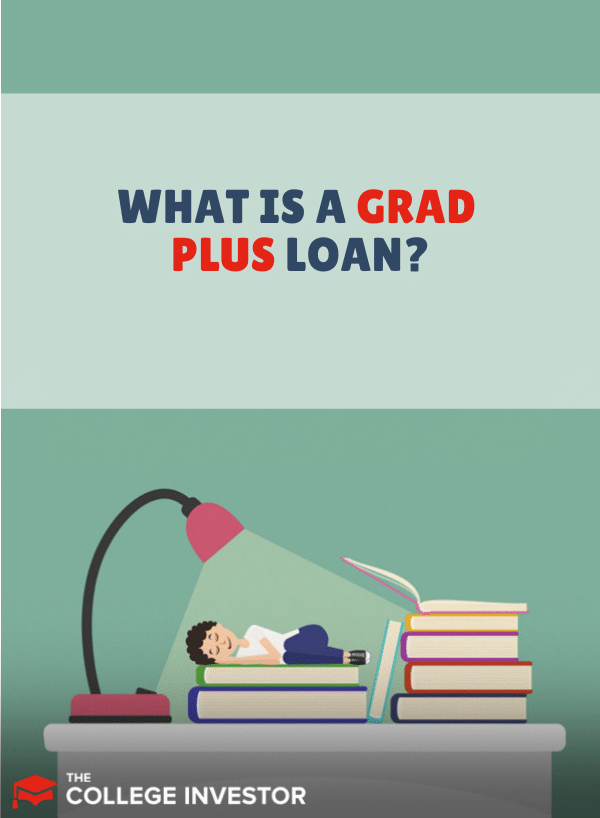
A Grad PLUS Loan is a specific type of federal student loan that can be used to pay for graduate, professional, or medical school.
Going to graduate school, medical school, or a professional school are common goals for people looking to advance in their careers.
But figuring out how to pay for an expensive education can be difficult, especially for people who have only been working for a year or two.
If you don’t have sufficient savings to cover the cost of graduate school, a Grad PLUS loan from the federal government may be a good option to consider. Here’s what you need to know about this student loan designed specifically for graduate students.
What Is A Grad PLUS Loan?
A Grad PLUS loan is a US Department of Education loan for students who are attending graduate, professional or medical school. Often, people pursuing an MD, JD, PhD, or Master's degree will use this loan to pay for some or all of their graduate school expenses.
Eligible borrowers can borrow up to the full cost of attending school (which includes a modest allowance for living expenses in most cases). This is unlike Stafford loans (Direct Subsidized and Unsubsidized) which have both annual and lifetime borrowing limits.
What Are The Eligibility Requirements?
To qualify for a Grad PLUS loan, you must be a student in either a professional (law or medical) or graduate school. Students must be enrolled at least half-time to qualify for the loan.
The enrollment requirement may seem concerning for students who are doing research to complete their thesis. However, these students will almost always qualify for the PLUS loans. In general, students doing research on a full-time or half-time basis will be awarded credit hours that will allow them to qualify for these loans.
The last requirement for these loans is that borrowers cannot have an adverse credit history. There is no particular credit score minimum, but anyone with bad credit (unpaid loans, bankruptcy, etc.) may want to spend a year or two repairing their credit before applying for a Grad PLUS loan.
Grad PLUS Loan Interest Rates
PLUS loans charge the highest rates of all federal student loans. Over the past 10 years, Grad PLUS loans have charged rates between 6.3% and 8.04%. This is always a fixed interest rate based on the year you took out the loan.
For the 2024-2025 academic year, the interest rate on Grad PLUS loans is 9.08%. Interest begins accruing the minute you take a disbursement. So if you take a $10,000 loan today, you will owe $10,754 next July.
Loan Fees
There is a “disbursement” fee associated with Grad PLUS loans. The disbursement fee is taken out of your loan issuance.
Right now the disbursement fee is 4.228%. With the disbursement fee, you receive less money than you borrow. When you borrow $10,000, you will only receive $9,577.20. The disbursement fee is applied every time you receive money from the loan.
What Are The Repayment Options?
Like Direct loans, you do not have to make any payments on your Grad PLUS loan while you're still enrolled in school. You will also have a 6-month grace period following graduation where you won’t have to make payments.
After graduation, you will be placed on a 10-year repayment plan. However, you can repay your loan sooner without penalty. Other options include refinancing your loans or joining an Income-Driven Repayment (IDR) plan. With IDR plans, your loans will be paid off or cancelled after 10 to 25 years, depending on a variety of factors.
Grad PLUS loans are eligible for all of the student loan repayment plan options.
Grad PLUS Student Loan Forgiveness Options
Grad PLUS Loans offer the same student loan forgiveness options as all federal student loans. These include popular programs like Public Service Loan Forgiveness or Teacher Loan Forgiveness.
These loans are also eligible for loan forgiveness tied to income-driven repayment plans, such as SAVE. However, since these loans are for graduate or professional school, the loan forgiveness timeline would be 25 years.
How Do Grad PLUS Loans Compare To Other Student Loan Options?
In general, Grad PLUS loans have interest rates that are competitive with or beat rates on private loans. However, the high disbursement fee may make a private loan look more attractive on the surface.
You’ll also want to consider repayment options. As mentioned earlier, Grad PLUS loans are eligible for Income-Driven Repayment (IDR) plans. Additionally, individuals who work full-time in public service could have their loans forgiven through the Public Service Loan Forgiveness (PSLF) program after 120 qualifying payments. This could be especially beneficial for medical students who plan to work in non-profit hospitals or clinics.
Private student loans may offer better interest rates, but they rarely offer the flexibility that federal loans offer. Because of this, we generally recommend choosing a Grad PLUS loan rather than a private loan to pay for graduate school.
However, it should be noted that while graduate students aren't eligible for Direct Subsidized loans, they can take out Direct Unsubsidized loans. If you haven't hit your Stafford loans borrowing limit, Direct Unsubsidized loans should be your first choice as their interest rate (4.30%) and disbursement fee (1.059%) are both lower.
Related: How To Pay For College: The Best Order Of Operations
Final Thoughts
Before you sign on the dotted line for any loan, it’s important to explore your options. In general, you’ll want to look for personal savings, scholarships, grants, and Stafford loans before turning to Grad Plus loans.
But if you've already taken out a Grad PLUS loan, refinancing at a lower rate could save you a lot of money in interest charges. If you took out your loan during the 2017-2024 academic years, for example, your interest rate will be over 7%. You might be able to nearly slice that rate in half by refinancing.
If you're not pursuing a federal forgiveness program, you owe it to yourself to check your pre-qualified rates with the top student loan refinancing companies.

Robert Farrington is America’s Millennial Money Expert® and America’s Student Loan Debt Expert™, and the founder of The College Investor, a personal finance site dedicated to helping millennials escape student loan debt to start investing and building wealth for the future. You can learn more about him on the About Page or on his personal site RobertFarrington.com.
He regularly writes about investing, student loan debt, and general personal finance topics geared toward anyone wanting to earn more, get out of debt, and start building wealth for the future.
He has been quoted in major publications, including the New York Times, Wall Street Journal, Washington Post, ABC, NBC, Today, and more. He is also a regular contributor to Forbes.
Editor: Clint Proctor Reviewed by: Claire Tak
